
There are a variety of ideas for themed charade games for your family game night!
- Subject:
- Education
- Material Type:
- Activity/Lab
- Author:
- Childhood 101
- Date Added:
- 06/08/2020

There are a variety of ideas for themed charade games for your family game night!
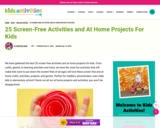
This site offers some of favorite Screen-Free Activities for Kids that will have kids learning and laughing. For PreK and elementary children.

4 Corner Dodgeball is an all-ages form of dodgeball where players are never out and never stop moving.

This website contains multiple games for kids, ranging from ELA to Math.
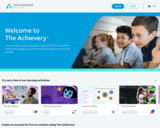
This site has a series of pre-made free lesson plans that are ready to teach right away. MATH, ELA, SCIENCE, SEL, CAREER, ART, DIGITAL LITERACY, TECH, STEM
They have clips of popular movies and TV shows built right in - and you are allowed to use them bc the site is made by AT
&T and Warner Bros.
"The Achievery helps connect students to a new world of digital learning through stories that spark curiosity and content that entertains as well as teaches."
Don't miss checking this one out! You can use the filters to find exactly what you need.
Copy and paste this url into a browser to watch a short 1 min intro video - https://youtu.be/w-y0u82ps3o
You will have to sign up to access the lessons but it's totally worth it.
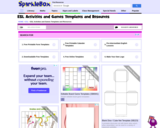
Various editable templates for classroom games and activities.
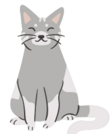
This thematic unit from Comox Valley Schools (SD71) in B.C. is aimed at Grade 6 Core French students, but is suitable for younger grades and would be easily adaptable for older ones. It is focused on oral practice and participation and would also be useful in French Immersion classes!Content Authors: Comox Valley Schools, Learn71, Beth Peddle

Create your own shapes using colorful blocks and explore the relationship between perimeter and area. Compare the area and perimeter of two shapes side-by-side. Challenge yourself in the game screen to build shapes or find the area of funky figures. Try to collect lots of stars!

How do you know if a chemical equation is balanced? What can you change to balance an equation? Play a game to test your ideas!

How do you know if a chemical equation is balanced? What can you change to balance an equation? Play a game to test your ideas!
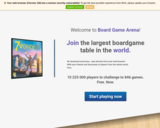
Join the largest board game table in the world.
No download necessary - play directly from your web browser.
The best games of yesterday and today, adapted for online play. Visit the site to see a complete list.
Play with friends and thousands of players from the whole world.
Free.

This thematic unit from Comox Valley Schools (SD71) in B.C. is aimed at Grade 6 Core French students, but is suitable for younger grades and would be easily adaptable for older ones. It is focused on oral practice and participation and would also be useful in primary French Immersion classes!
THIS UNIT'S THEME: Body Parts & Monsters (Le corps & les monstres)
In addition to tips for incorporating French into daily routines, the unit includes:
-Vocabulary
-Pronunciation videos
-Kahoot/flash card games
-Word games
-Games and activities for oral practice
-An art & writing activity
The same page details other units and a Cultural Study: La culture de Montréal.

Students learn how to create functions to organize their code, make it more readable, and remove repeated blocks of code. An unplugged warmup explores how directions at different levels of detail can be useful depending on context. Students learn that higher level or more abstract steps make it easier to understand and reason about steps. Afterwards students learn to create functions in Game Lab. They will use functions to remove long blocks of code from their draw loop and to replace repeated pieces of code with a single function. At the end of the lesson students use these skills to organize and add functionality to the final version of their side scroller game.

In this lesson, students are introduced to boolean values and logic, as well as conditional statements. The class starts by playing a simple game of Stand Up, Sit Down in which the boolean (true/false) statements describe personal properties (hair or eye color, clothing type, age, etc). This gets students thinking about how they can frame a property with multiple potential values (such as age) with a binary question.
From there students are provided a group of objects with similar, yet varying, physical properties. With a partner they group those objects based on increasingly complex boolean statements, including compound booleans with AND and OR.
Finally we reveal Conditionals as a tool to make decisions or impact the flow of a program using boolean statements as input.

Students are asked to consider the "problems" of boredom and self expression, and to reflect on how they approach those problems in their own lives. From there, students will explore how Computer Science in general, and programming specifically, plays a role in either a specific form of entertainment or as a vehicle for self expression.

In this multi-day lesson, students use the problem solving process from Unit 1 to create a platform jumper game. They start by looking at an example of a platform jumper, then define what their games will look like. Next, they use a structured process to plan the backgrounds, variables, sprites, and functions they will need to implement their game. After writing the code for the game, students will reflect on how the game could be improved, and implement those changes.

Students will plan and build their own game using the project guide from the previous two lessons to guide their project. Working individually or in pairs, students will first decide on the type of game they'd like to build, taking as inspiration a set of sample games. They will then complete a blank project guide where they will describe the game's behavior and scope out the variables, sprites, and functions they'll need to build. In Code Studio, a series of levels prompts them on a general sequence they can use to implement this plan. Partway through the process, students will share their projects for peer review and will incorporate feedback as they finish their game. At the end of the lesson, students will share their completed games with their classmates. This project will span multiple classes and can easily take anywhere from 3-5 class periods.

Students explore the challenges of communicating how to draw with shapes and use a tool that introduces how this problem is approached in Game Lab. The warm up activity quickly demonstrates the challenges of communicating position without some shared reference point. In the main activity students explore a Game Lab tool that allows students to interactively place shapes on Game Lab's 400 by 400 grid. They then take turns instructing a partner how to draw a hidden image using this tool, accounting for many challenges students will encounter when programming in Game Lab. Students optionally create their own image to communicate before a debrief discussion.

This lesson introduces students to the process they will use to design games for the remainder of the unit. This process is centered around a project guide which asks students to define their sprites, variables, and functions before they begin programming their game. In this lesson students begin by playing a game on Game Lab where the code is hidden. They discuss what they think the sprites, variables, and functions would need to be to make the game. They are then given a completed project guide which shows one way to implement the game. Students are then walked through this process through a series of levels. As part of this lesson students also briefly learn to use multi-frame animations in Game Lab. At the end of the lesson students have an opportunity to make improvements to the game to make it their own.

Students are introduced to Game Lab, the programming environment for this unit, and begin to use it to position shapes on the screen. They learn the basics of sequencing and debugging, as well as a few simple commands. At the end of the lesson, students will be able to program images like the ones they made with the drawing tool in the previous lesson.